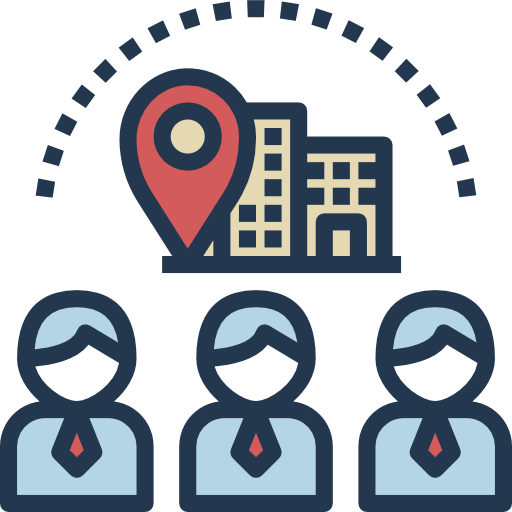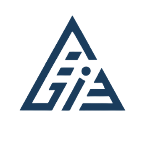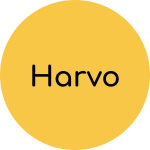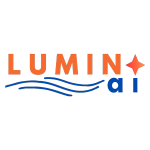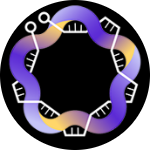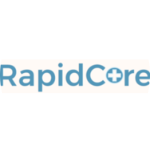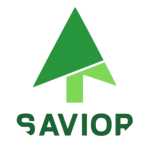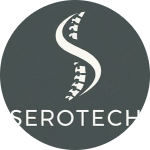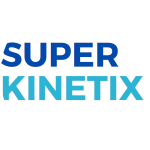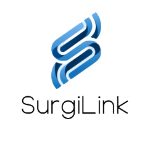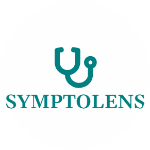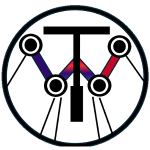Our
Teams
2024 Startups
Corium
Parchment was widely used as a writing medium across Europe, the Mediterranean, and the Horn of Africa from the 2nd century BC until the 17th CE. Parchment is composed mainly of the protein collagen as found in our skin and bones.
Despite its longevity, parchment is susceptible to collagen-specific degradation mechanisms, which can occur at any or all levels of the structural hierarchy. The rejuvenation of parchment is essential to preserve it carries so much written knowledge from the past: the poetry of Chaucer, Dante, and Marie de France; the science of Avicenna and al-Khwarizmi; the theology of Aquinas and Maimonides and the Dead Sea Scrolls.
How can parchment—and the centuries of knowledge written on its surface—be sustainably preserved and restored? Presently, conservators and museum curators have no accepted methods to repair parchment once it degrades. This world heritage will disappear unless we find a solution to rejuvenate it.
Our solution involves re-engineering natural glycation crosslinks in collagen from parchment using methods translated from Tissue Engineering and extending their lifetime by reversing the test of time of these precious artifacts.
Contact Corium
DisputeLens
Large construction projects have complex systems of contracts. Construction often deviates from the original plan. Delays, scope changes, and ongoing renegotiation can all result in disputes about how much money is actually owed between parties.
To win a dispute, a contractor might spend weeks looking through thousands of documents, including the original contract, emails, and site reports. They have the burden of proving what the final agreement was, and what actually occurred on site. Their team may lack legal expertise and fail to submit sufficient evidence, ultimately losing a dispute that was rightfully theirs to win.
For this reason, contractors often hire external counsel. Globally, construction companies pay lawyers $7.3 billion annually to handle these contract disputes. Much of this is spent before a contractor even knows their chance of winning.
We propose a software that automatically pulls relevant textual evidence from the project documentation. A contractor could request evidence on a particular issue and the software would use predictive AI to sort results according to relevancy. This will allow contractors to understand potential claims before paying legal fees.
Contact DisputeLens
G.A.I.A Materials
The global demand for sustainable materials is skyrocketing as industries struggle to find materials that meet their specific performance, cost, and environmental requirements. Traditional material discovery processes are slow, costly, and ill-equipped to meet this urgent need. Existing computational tools fail to address the unique needs of specific industries and lack the precision necessary for impactful discoveries. GAIA bridges this innovation gap, empowering industries to accelerate the discovery process.
Contact G.A.I.A Materials
GutHarmony
Hormonal imbalances affect 80% of women at some point in their lives, causing a myriad of
mental and physical symptoms that significantly reduce their quality of life. Studies indicate that
improving gut health can alleviate up to 60% of the issues associated with hormonal
imbalances. Despite this, current solutions are often generic and fail to address the unique
needs of individual women. Women deserve better—personalized health solutions tailored to
their unique microbiomes.
GutHarmony aims to fill this critical gap by offering bespoke, scientifically-backed solutions that
enhance women’s health and well-being through targeted gut microbiome analysis and
personalized health plans.
Contact GutHarmony
Harvo
Reusable water bottles, such as metal or plastic flasks, have become a staple of sustainable hydration, with approximately 60% of North Americans owning at least one. Despite this, many hydration-conscious individuals struggle to hydrate on the go. This struggle arises due to the scarcity of public refilling stations, the lack of trust in their sanitation, and the constant need to refill an empty bottle. As a result, roughly 70% of North Americans experience chronic dehydration, along with prolonged headaches, fatigue, nausea, and a 25% drop in physical performance. As such, there is a clear need for a sustainable solution that hydrates young adults on the go, anytime, anywhere, without the hassle of manually refilling.
Contact Harvo
InkTank
In today's evolving socio-political climate, tattoos are increasingly accepted, even within corporate environments. However, many individuals struggle with indecision — they lack a platform to help plan and visualize tattoo designs on their own unique body before making a lifelong commitment. The challenge is further complicated by the inherent distortion when translating between two-dimensional designs and the three-dimensional canvas of the body, deterring potential consumers. In the realm of artist-client interactions, conveying three-dimensional concepts solely through one-dimensional verbal communication proves to be ineffective, sluggish, and ambiguous. Moreover, the importance of long-term planning becomes evident as individuals contemplate integrating multiple tattoos across various anatomical regions, necessitating a cohesive strategy that is further compounded by the need to consider the ways their body might grow, change, or stretch with time. Additionally, artists face the pervasive issue of freebooting, where their original artwork is misappropriated without proper attribution or compensation.
Contact InkTank
Lumina.ai
Working parents often face a challenging schedule, finding only a limited amount of time to spend with their children after they return from daycare and school. Despite these time constraints, there's a strong desire among these parents to foster their children's intellectual and social skills during these precious moments, rather than defaulting to passive activities like tablet use or video gaming. Unfortunately, the market's current offerings of educational toys are limited, lacking in both engagement and appropriateness for children's developmental needs. This creates a pressing demand for innovative educational solutions that can cater to busy families, ensuring children's playtime is both fun and enriching.
Contact Lumina.ai
Plasmid.ai
Pathogenic resistance, the phenomenon where pathogens develop the ability to withstand treatments meant to eliminate them, presents a significant challenge in healthcare and drug discovery. This escalating problem not only threatens the effectiveness of current treatments but also underscores the critical need for innovative approaches to combat resistance. At Plasmid.AI, our approach aims to address this issue by harnessing the power of artificial intelligence to create novel synthetic plasmid-based toxin-antitoxin systems. These AI-generated systems are designed to specifically neutralize antibiotic-resistant pathogens, offering a fresh and potent approach to combat this global health threat.
Contact Plasmid.ai
RapidCore
Many seniors struggle with adhering to their medication regimens, a problem that leads to serious health complications, hospitalizations, and even fatalities. Research indicates that 59% of seniors on prescription medications fail to follow their treatment plans at some point. Additionally, many seniors prefer a traditional medication experience, avoiding complex systems or digital management tools. This preference for simplicity often places a significant burden on caregivers, who must ensure medications are taken correctly. Caregivers need a reliable notification system that keeps them informed about their loved ones' adherence without complicating the seniors' routine. RapidCore addresses this dual challenge by offering CoreCare, a prescription drug storage device that integrates seamlessly with traditional medication practices. CoreCare notifies caregivers of any discrepancies in medication intake, ensuring seniors receive the right doses at the right times while maintaining their preferred method of taking medication directly from the bottle. This approach combines ease of use for seniors with peace of mind for caregivers, fostering better health outcomes and reducing caregiver stress.
Contact RapidCore
Savior
Industrialization and wildfire have significantly heightened deforestation rates, demanding urgent reforestation efforts. Unmanned Aerial Vehicles (UAVs) offer a breakthrough solution by enabling mass and automated seed dispersal. Nevertheless, traditional seed dispersal methods lack efficiency and precision, leading to a suboptimal germination rate. Our startup aims to maximize the effectiveness of planting initiatives, by leveraging Machine Learning techniques and cutting-edge UAVs control to identify and traverse through areas with the highest potential for seed germination and growth. This targeted approach not only optimizes resource utilization but also maximizes environmental restoration efforts, ensuring a more sustainable and effective response to the pressing issue of deforestation and its impacts on the global ecosystem.
Contact Savior
Serotech
Current non-invasive electrodes used in brain imagery are categorized into two types; wet electrodes which are superior in signal clarity yet unfit for hair-covered surfaces, and dry electrodes which are suited for all surfaces yet lacking signal clarity. Unfortunately, current applications require not just noise-free signal transmission but also exponentially more compact electrode design, needing a high number of units to simultaneously gather data for more advanced applications such as reconstructing images from brains, controlling robotic, prosthetic arms, and even enabling AR/VR interfaces for hands-free smooth user experience since machine learning activities require larger data inputs.
Contact Serotech
SuperKinetix
Every year over 400,000 people in the United States and Canada undergo ACL surgery and during the rehabilitation process, all patients will experience some form of muscle loss. This will heavily affect a patient’s ability to return to sports and daily activities. If left unaddressed, this muscle loss can cause gait abnormality, poor function, dynamic instability, persistent knee pain, and early osteoarthritis preventing athletes from pursuing their careers in sports, prevent people from working, and cause long-term crippling pain, all of which could result in significant financial damage.
The two problems patients face are:
1. An unoptimized and inefficient rehabilitation process, and
2. Limited available quantifiable information and feedback for the patient about their recovery progress.
This leads to a lack of patient confidence in returning to normal activities, and increased frustration in the rehabilitation process resulting in delayed recovery or incomplete healing.
Contact SuperKinetix
SurgiLink
As a surgeon in the OR, we rely on the scrub nurse and circulating nurses as a part of our team. Before a case starts, sterile supplies and equipment need to be opened and put out on a table by a sterile scrub nurse. An anticipated number of certain items such as sponges, sutures, clips, are opened but often more of these items are required, sometimes quickly, during the case. During these moments, we rely on the circulating nurse to find the item and open it, handing it to the scrub nurse. Sometimes too many items are opened and not needed during the case - leading to waste. I propose a vending machine technology that has the items filled in a sterile manner and can dispense the items with voice command. A surgeon or nurse can speak out loud "2-0 undyed polysorb tapered" or call out a "bin number" and then that item will release into a tray that the sterile surgeon or nurse can access. This system will help when the circulating nurse may be involved in another task such as preparing pathology specimens and will minimize delays. It may also allow for less items to be opened at the beginning of the case, and allow for more specific usage.
Contact SurgiLink
SymptoLens
Approximately 1/3 of the Canadian population between the ages 19-59 have inadequate levels of essential vitamins and minerals, and the current treatment process for diagnosing these deficiencies is inconvenient and time-consuming. Hospital waiting times are at an all-time high and the general public does not have the time or resources to wait in these long lines just to get a few basic tests done. The current lengthy process of blood sampling can be worked around by simply analyzing the characteristics of the patient’s fingernails to diagnose them quickly and effectively. However, the modern healthcare system forces these patients to neglect the health aspect of their lives which can prove to be detrimental in the long run. To tackle this issue, we aim to provide a convenient, affordable, and accurate way for users to check and identify probable health conditions at home.
Contact SymptoLens
ULA
Walk-in clinics across Ontario are facing significant operational challenges due to increased demand for services and staffing shortages, exacerbated by the pandemic. The surge in patient volume has led to wait times ranging from 1.5 to 3 hours, causing operational inefficiencies and increased costs due to staff overtime and stress. The average diagnosis time for a physician ranges between 12-15 minutes, with up to 5 minutes wasted per patient due to communication issues, limiting physicians to seeing only 4-6 patients per hour. Miscommunication arises from patient anxiety, low health literacy (with 60% of Canadian adults reporting low health literacy), and language barriers. Canada welcomes approximately 500,000 immigrants annually, significantly increasing the demand for healthcare services. With 85% of patients in walk-in clinics being immigrants, language barriers further complicate communication, leading to extended diagnostic processes and inefficiencies. This results in a loss of approximately $500,000 in potential revenue for a medium-sized clinic due to communication challenges. Prolonged wait times and inefficient care delivery lead to patient dissatisfaction, prompting them to seek services elsewhere, reducing repeat visits and impacting revenue. Despite past attempts to manage patient flow through redirection tools or queuing systems, these efforts have consistently fallen short in addressing patient-physician variability during consultation time.
Contact ULA
Uma
In universities, offices, and residential buildings, the challenge of accessing quick, satisfying food and drink options tailored to personal preferences and nutritional needs remains unresolved. Traditional solutions like vending machines, cafeterias, food trucks, and delivery services, fall short in several aspects. Vending machines offer limited choices, failing to cater to the diverse cravings or dietary requirements of consumers. Cafeterias, while somewhat more varied, often involve time-consuming waits and may not provide cost-efficient solutions. Food trucks and delivery services, despite their convenience in bringing food closer to the consumer, still require waiting times that are incompatible with tight schedules, such as university class transitions or office lunch breaks. Moreover, none of these options adapt to local consumer trends or provide insights into the nutritional value needed for a balanced diet, leaving a gap in the market for an innovative solution that offers immediate, evolving variety, personalization, and health-conscious choices.
Contact Uma
Vision Innovation
Smoke disorientation, where firefighters lose their directions because of smoke blocking their sight, is responsible for 32% of the total casualties of the firefighters, leading to an annual average of 997 injuries, 3 deaths, and $176M compensation fee in Canada. The current solution (Thermal Imaging Camera) helps firefighters to see, but has critical problems. Firefighters find it delayed, too large and heavy, and requires an extra hand to operate. The firefighters claimed that they need a faster, lighter, and handsfree device that allows them to see through smoke.
Contact Vision Innovation
VisioSync
Eight percent of the United States population–approximately 20 million people–suffer from visual impairments. These impairments are the leading cause of loss of independence for those above the age of 65. Consequently, seniors with vision loss have double the mortality rate than those without [1]. This is a growing problem as the proportion of our population above 65 is expected to grow by 47% by the year 2050 [2]. Additionally, the prevalence of vision loss is expected to increase by nearly 30% in the next decade [1]. Furthermore, eye diseases and vision loss cost the US $68 billion, annually [3].
Certain visual impairments like visual field loss (hemianopia, glaucomas, etc.), impaired eye movement, and visual neglect can pose serious safety hazards, particularly when navigating crowded areas and crossing the street. A leading cause of these visual impairments is stroke (ischemia). Every year 795,000 strokes occur in the US alone [4]. From this number, 65% of patients experience some form of vision impairment as a result of the brain having difficulty processing information from the eyes [5]. Most stroke victims that face vision loss do not fully recover. Visual impairment after a stroke reduces quality of life and causes social isolation due to the inability of navigating one’s surroundings with ease. This includes the performance of ordinary daily tasks such as walking outside, crossing the street and going to crowded areas. Current solutions, including prism glasses and eye exercises, are not always effective and often cause negative side effects such as headaches and nausea. There are no existing effective therapies that harness new technologies such as virtual reality and machine learning. These technologies have the potential to provide more robust visual aids for those facing visual impairment.
Contact VisioSync
WatTron
The world is in dire need of reliable and safe electric power lines lines to meet the ever-increasing demand for electricity. However, the repair and construction of these lines is a hazardous and demanding task that requires skilled labor. Unfortunately, the supply of skilled labor for transmission & distribution line operations is dwindling & the Health & Safety risks inflected upon Linemen is far too great to be ignored, creating significant challenges for the energy sector. Dexterous robots offer a potential solution to this problem, as they can mitigate safety concerns and fill the labor shortage while improving efficiency & retaining knowledge that is otherwise lost to a retiring generation. How can we effectively leverage robots to address the shortage of skilled labor and improve the safety and efficiency of transmission & distribution lines repair & construction globally?
Contact WatTron


